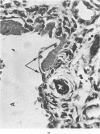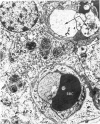Abstract
Alterations of lung tissues were evaluated in 74 infants with respiratory distress who received respirator therapy and high concentrations of oxygen for varying durations. Infant survival ranged from 3 hours to 135 days. Sequential pathologic changes were revealed to be an exudative reaction superimposed upon the early stages of typical hyaline membrane disease. This merged with and was eventually replaced by a reparative fibroproliferative response that was most pronounced in those infants who survived for the longest period of time. This response appeared causally related to the development of pulmonary complications of interstitial fibrosis, emphysema, obliterative bronchiolitis and cystic bronchiolectasis. Correlative ultrastructural studies disclosed generalized capillary endothelial damage in early stages of oxygen therapy, interstitial edema and alteration of alveolar cells attributed to the toxic effects of oxygen. Proliferation of type 2 alveolar cells with incorporation of hyaline membranes into septal walls was a notable feature of the reparative reaction and appeared significant in the subsequent development of interstitial fibrosis.
Full text
PDF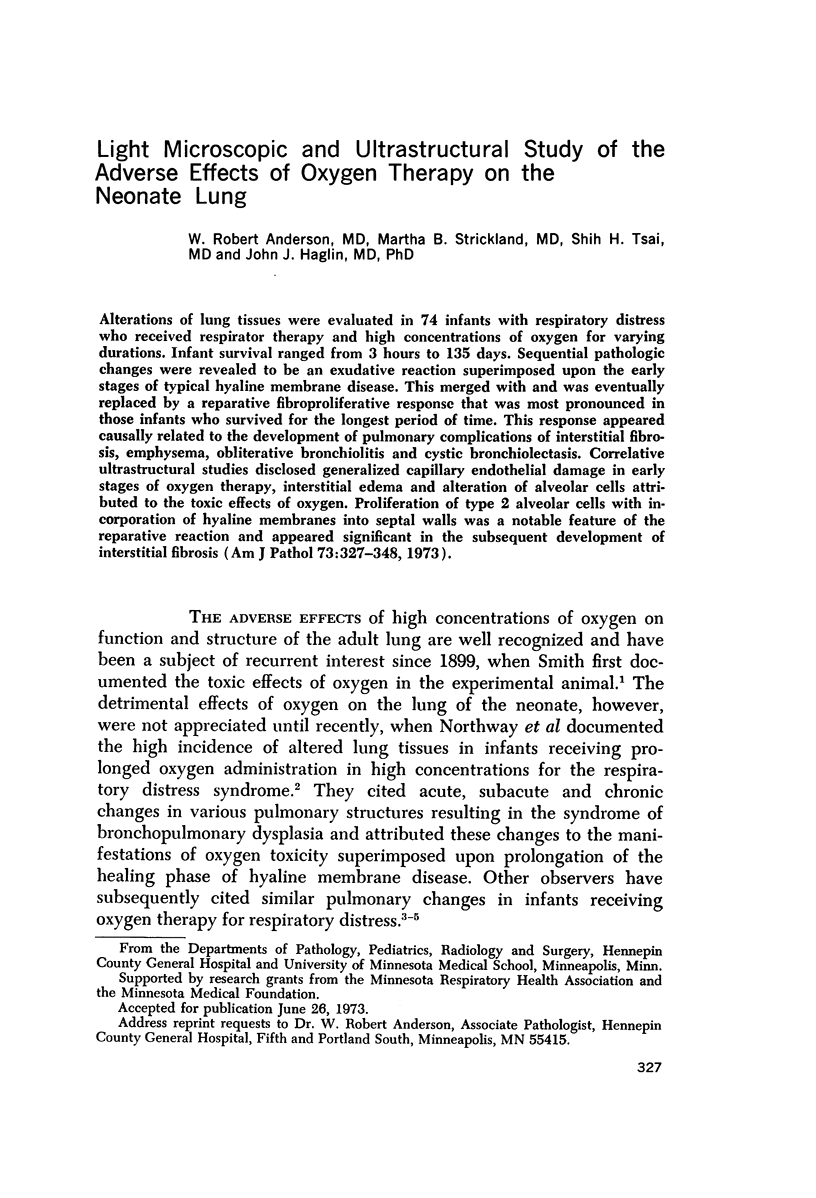
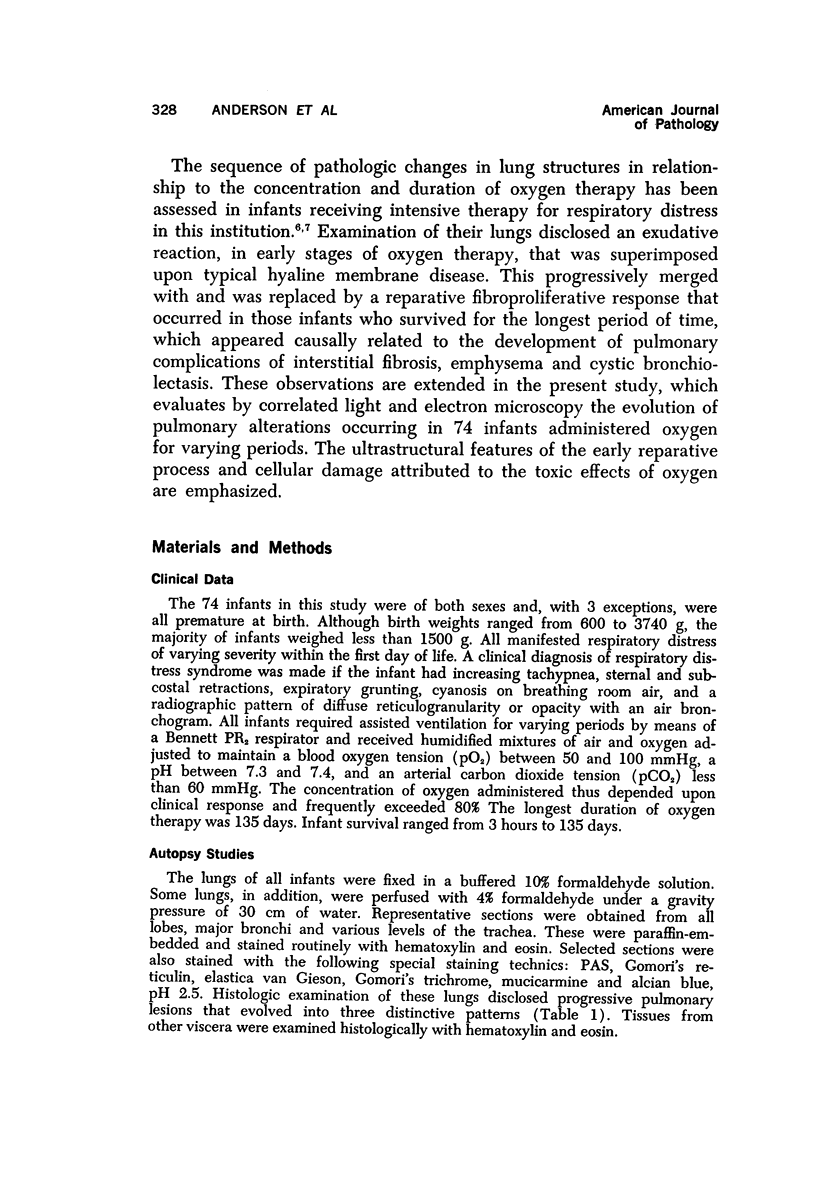
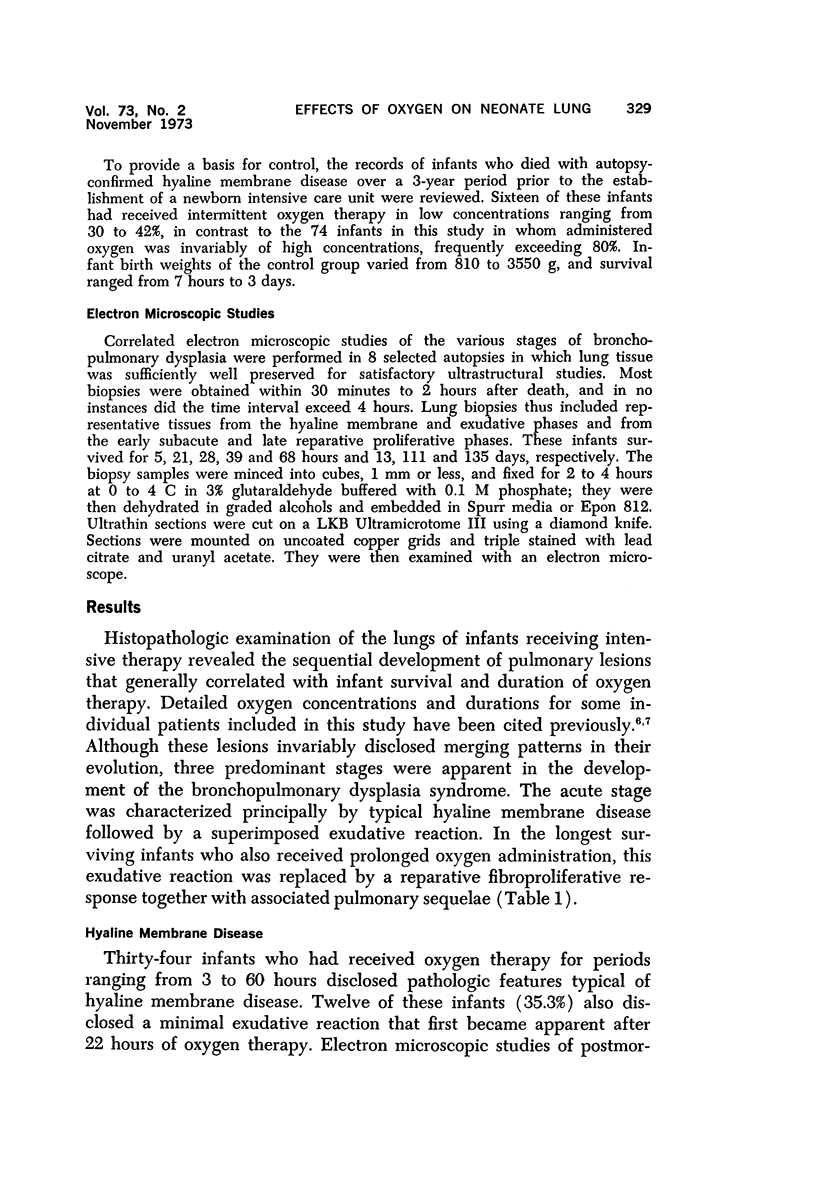
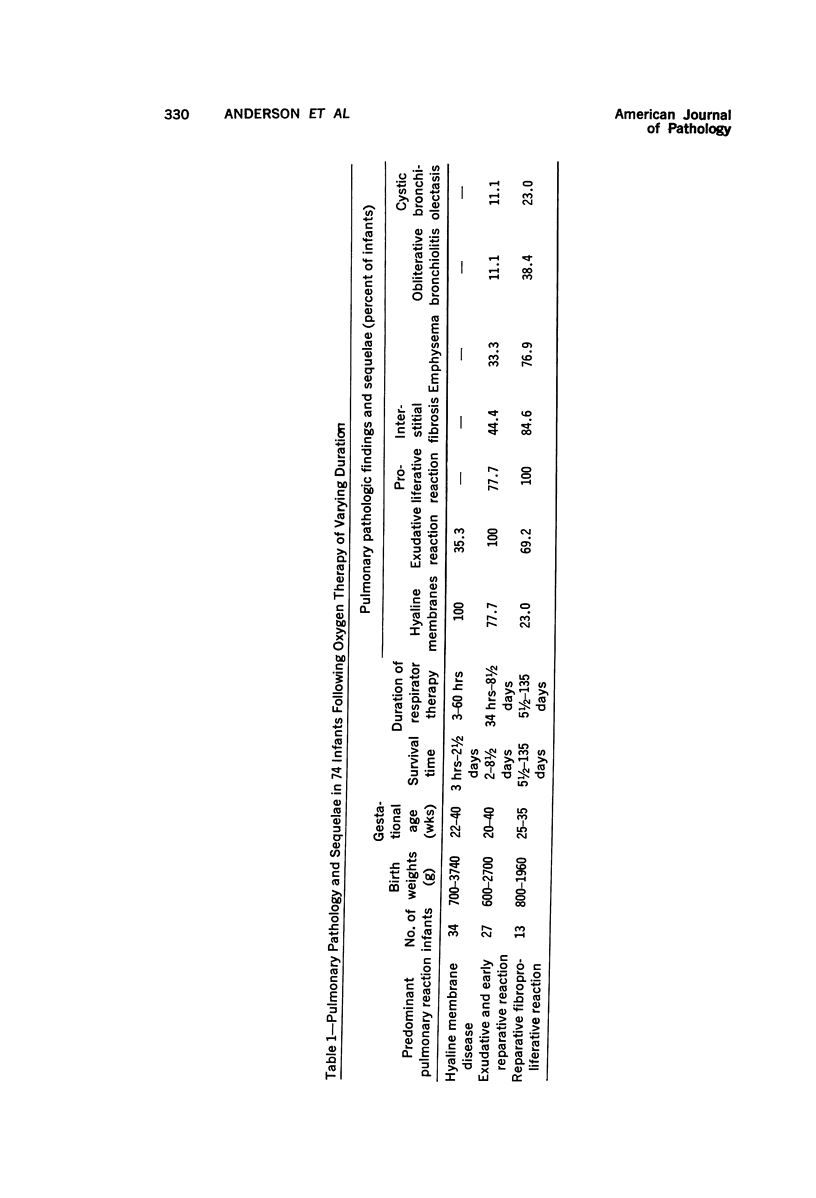
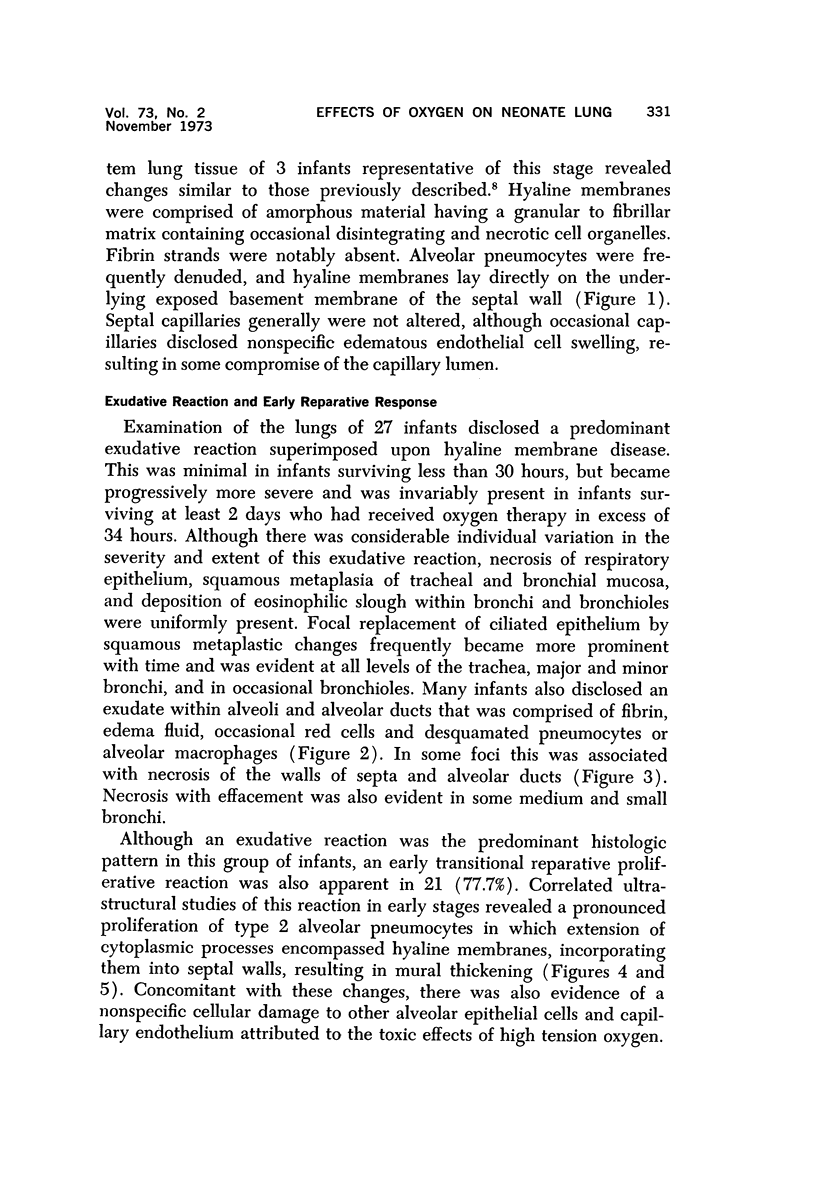
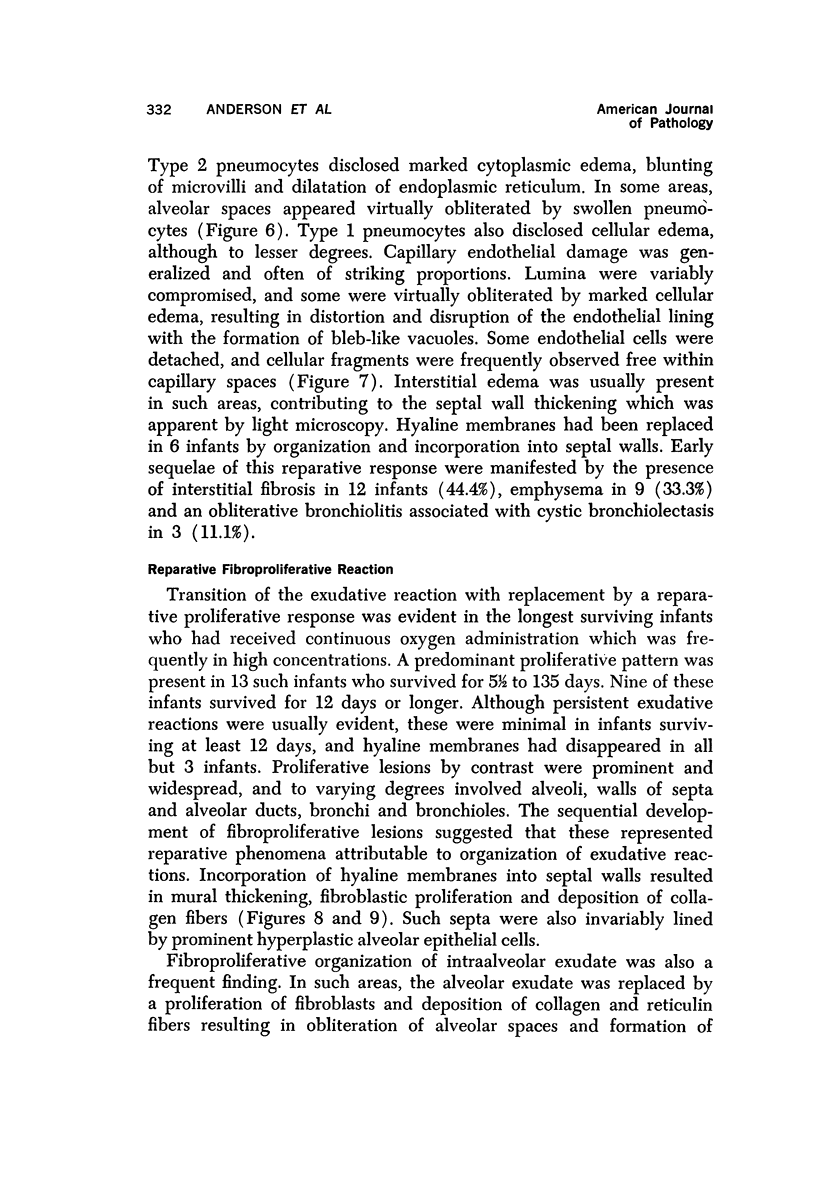
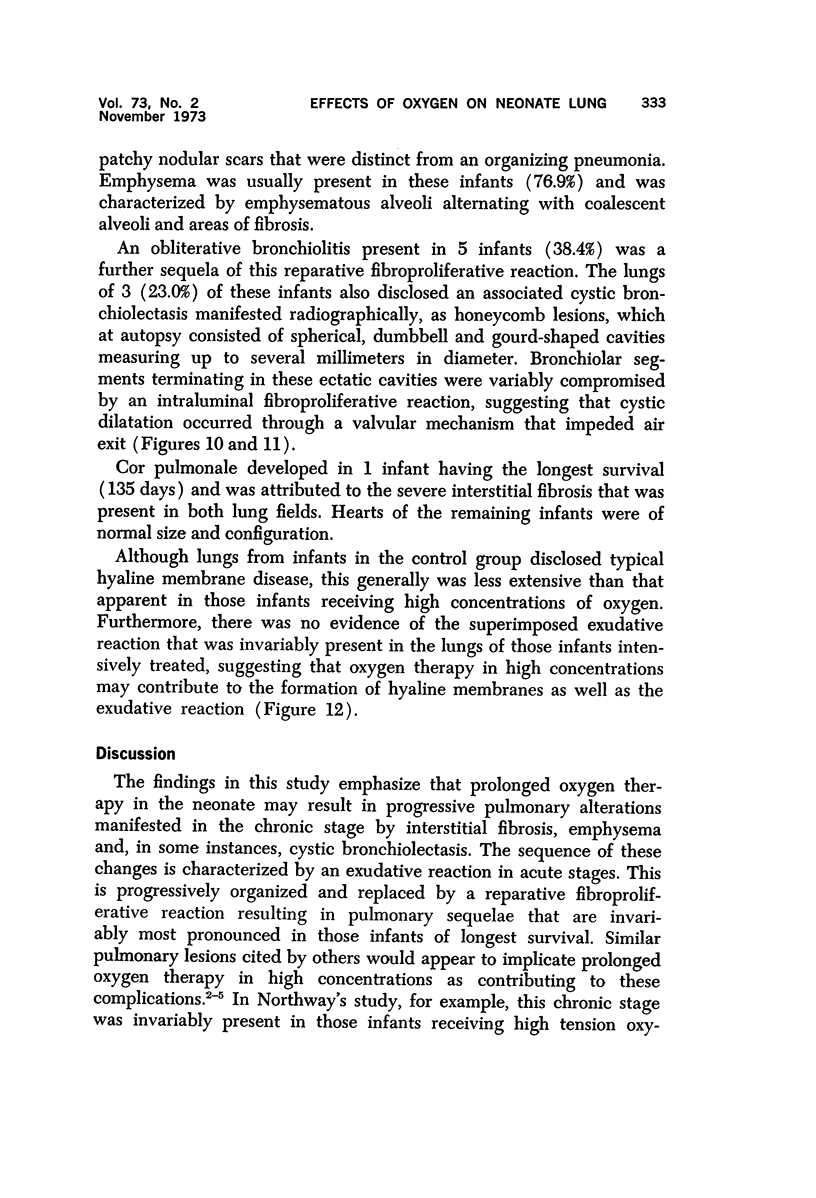
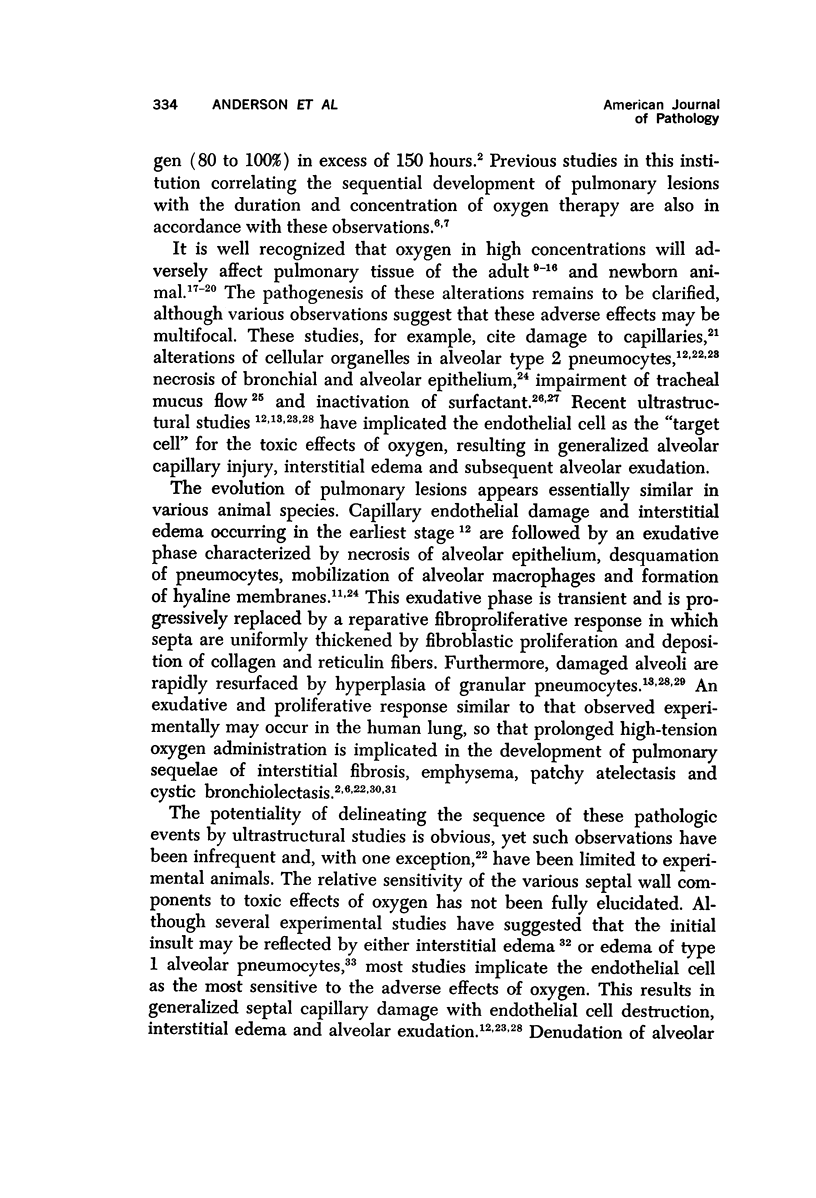
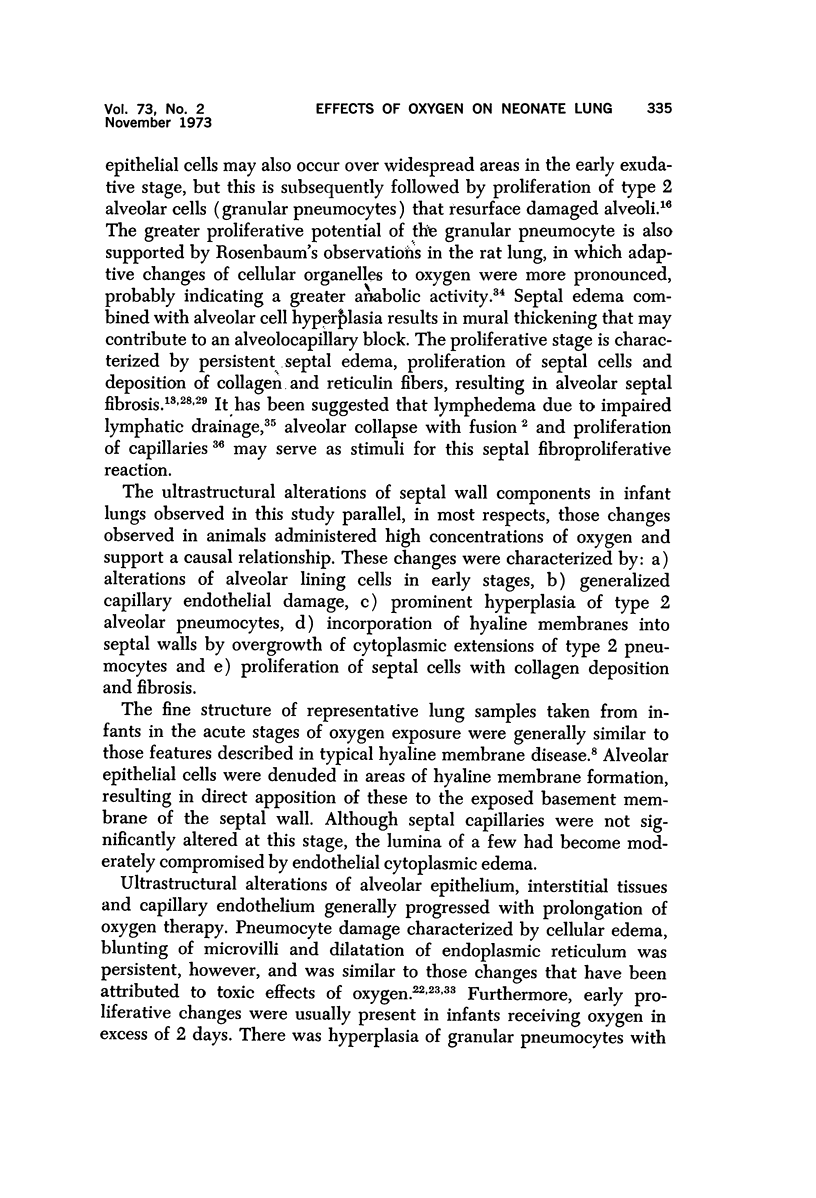
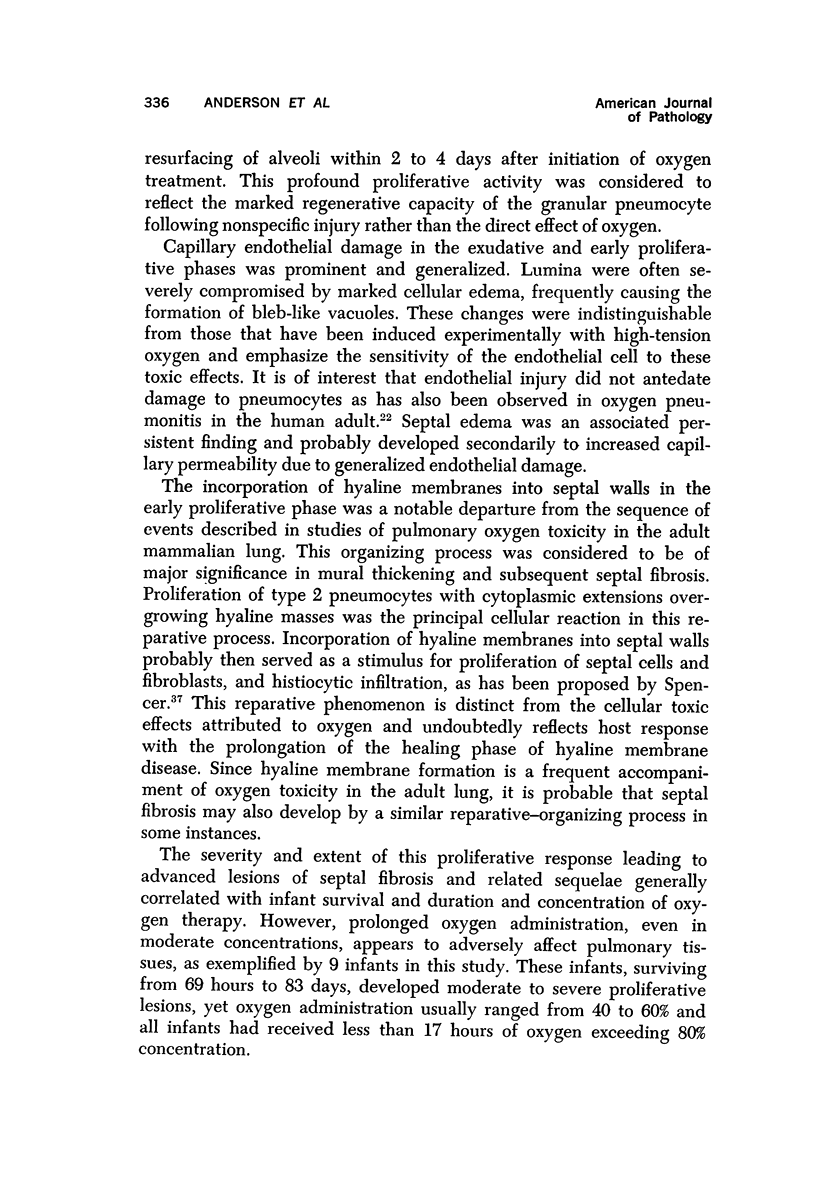
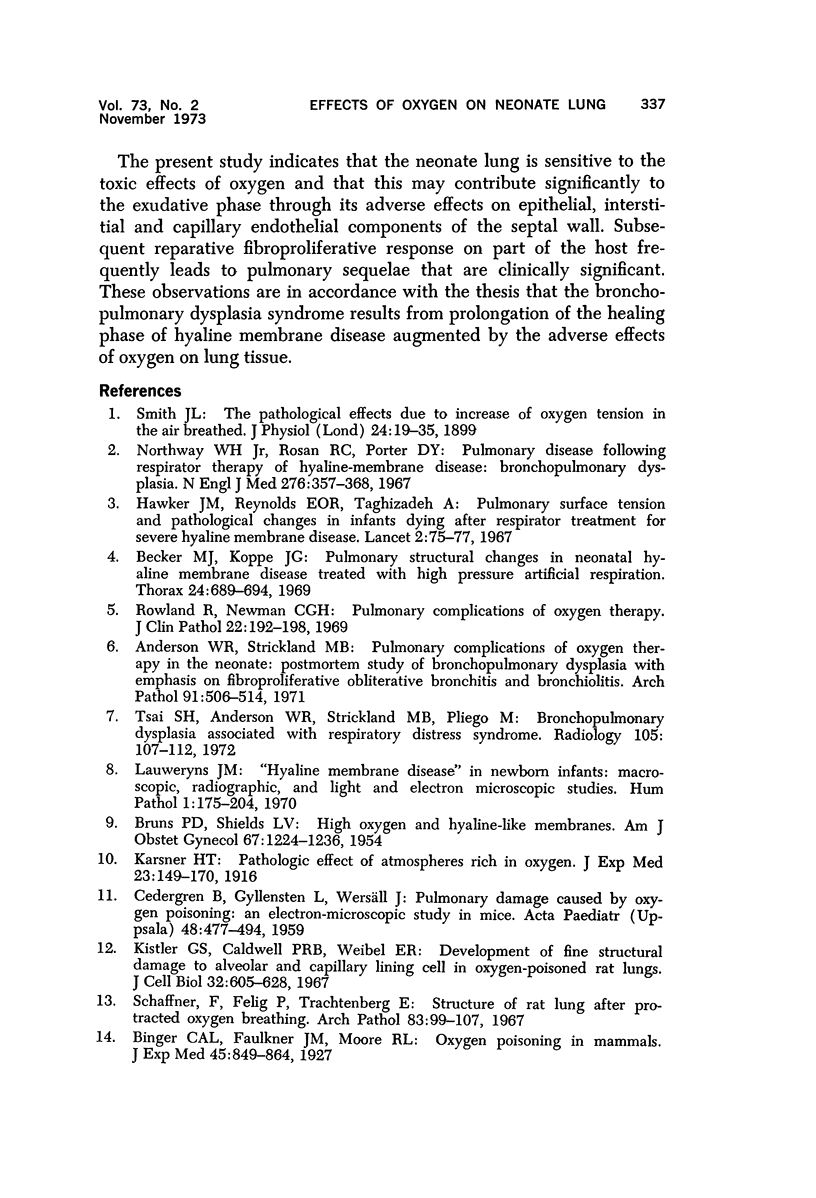
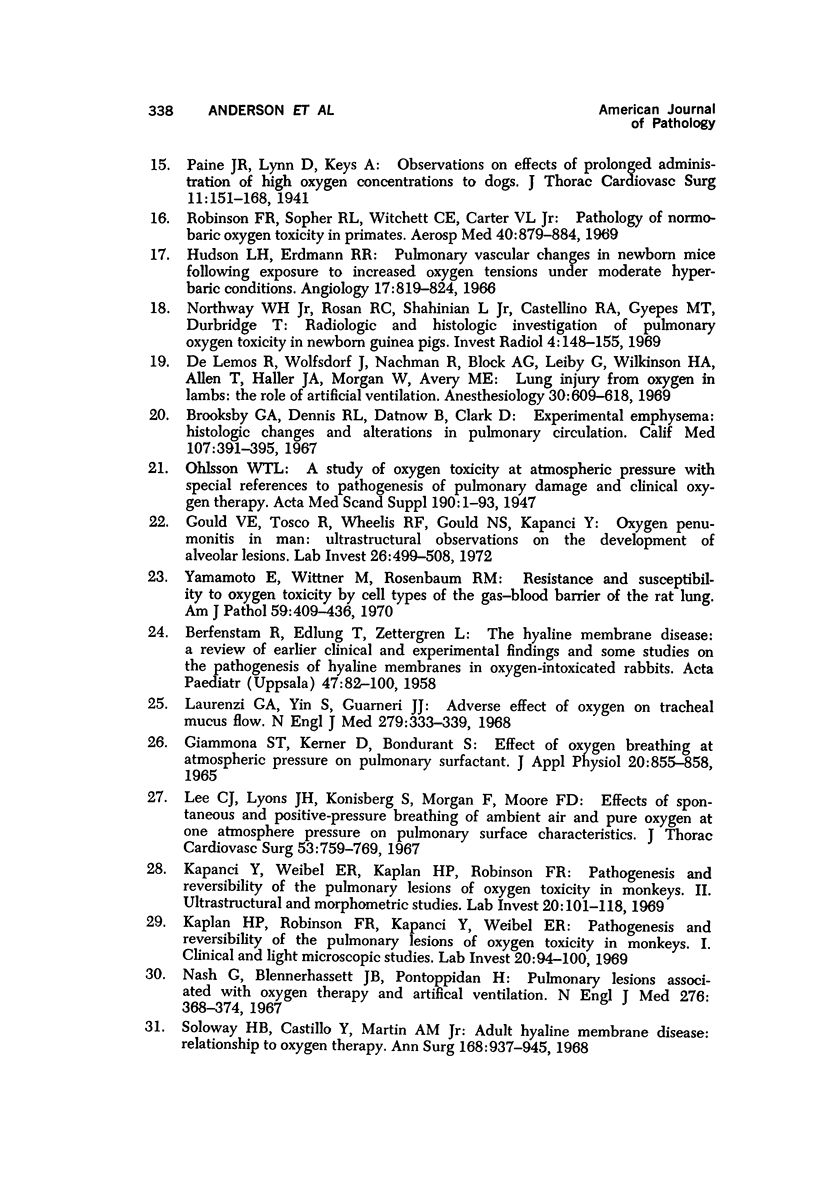
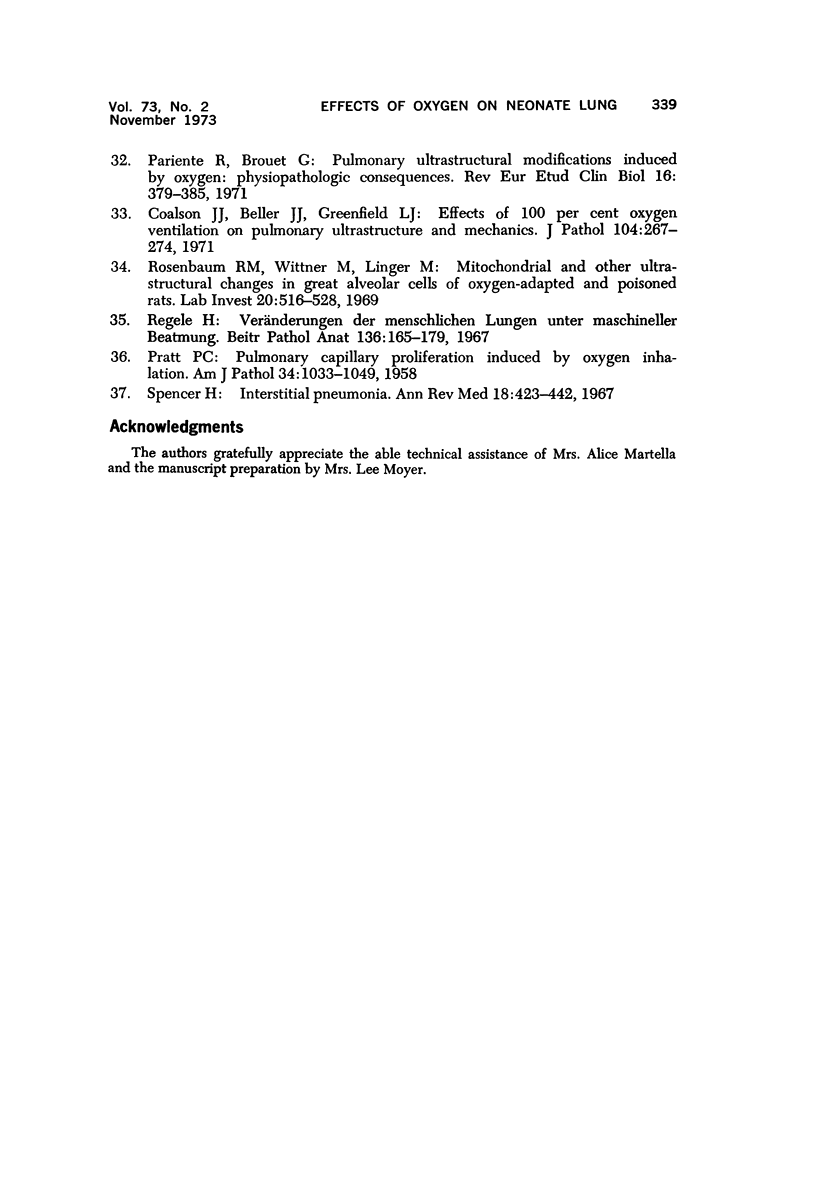
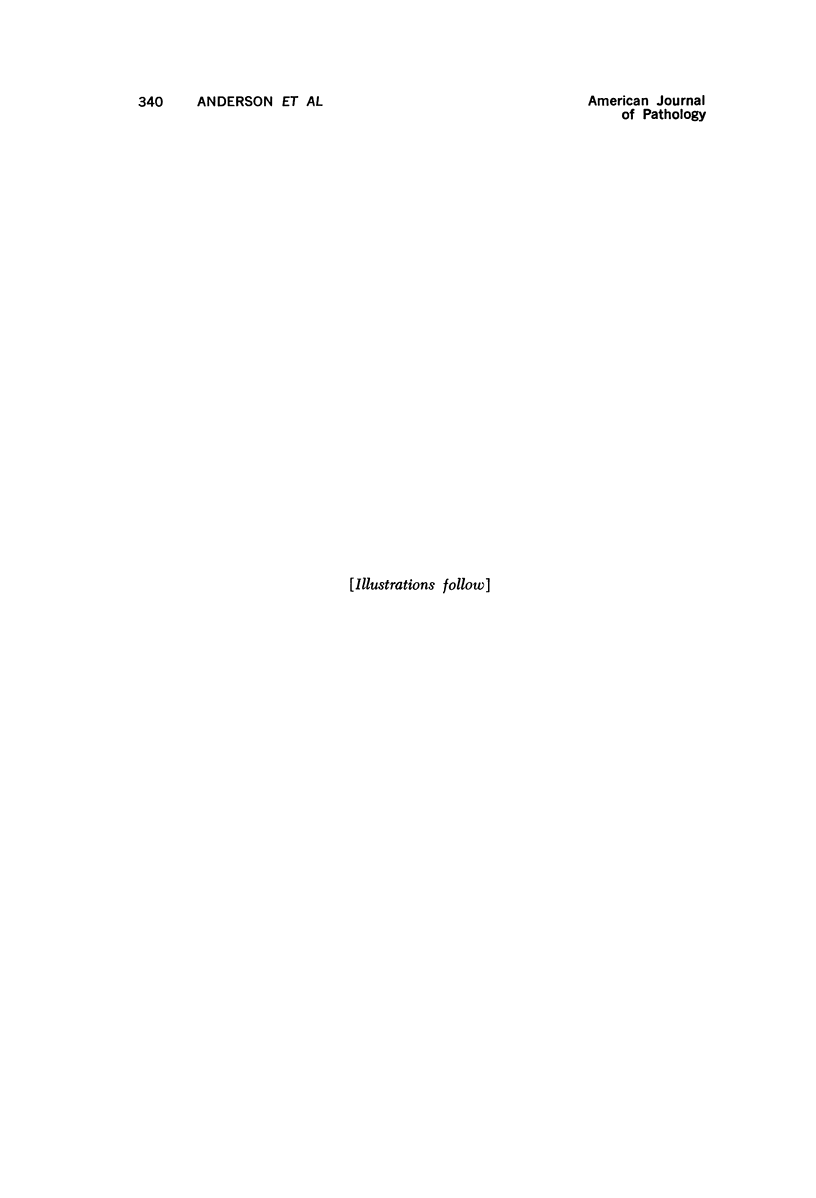
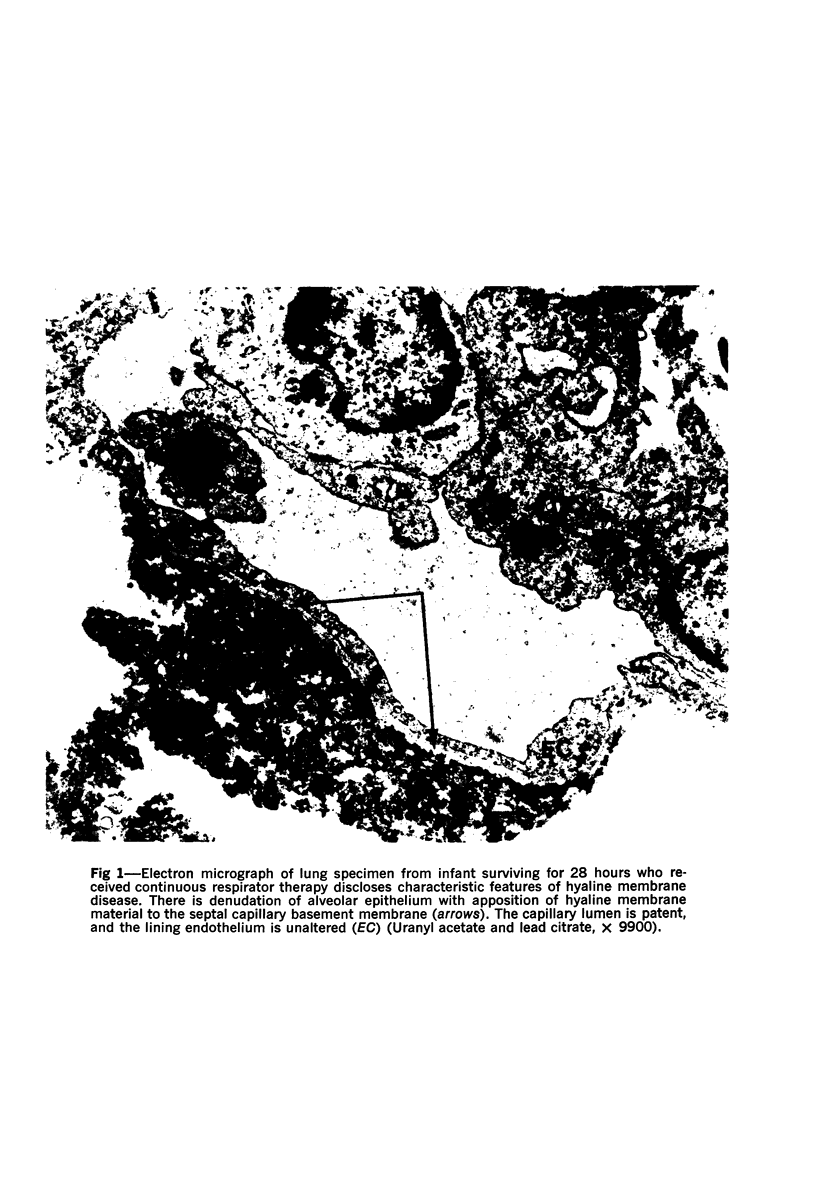
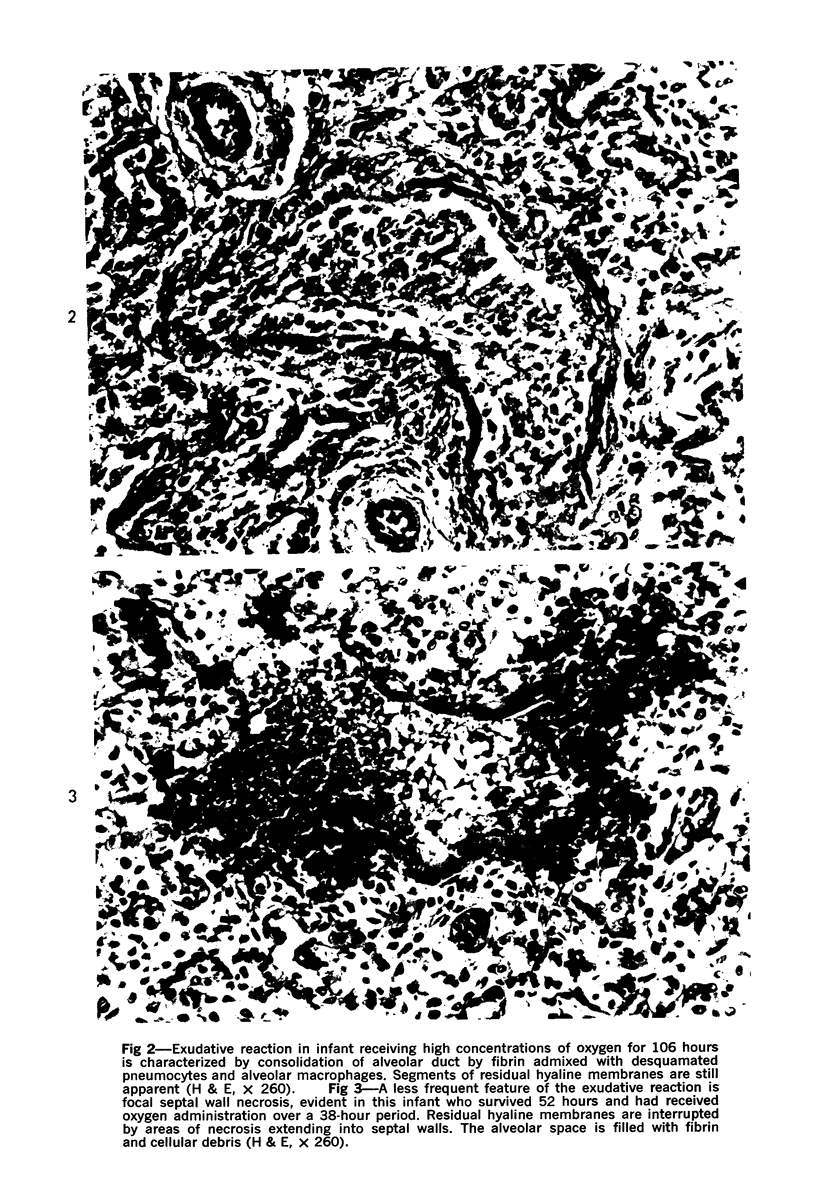
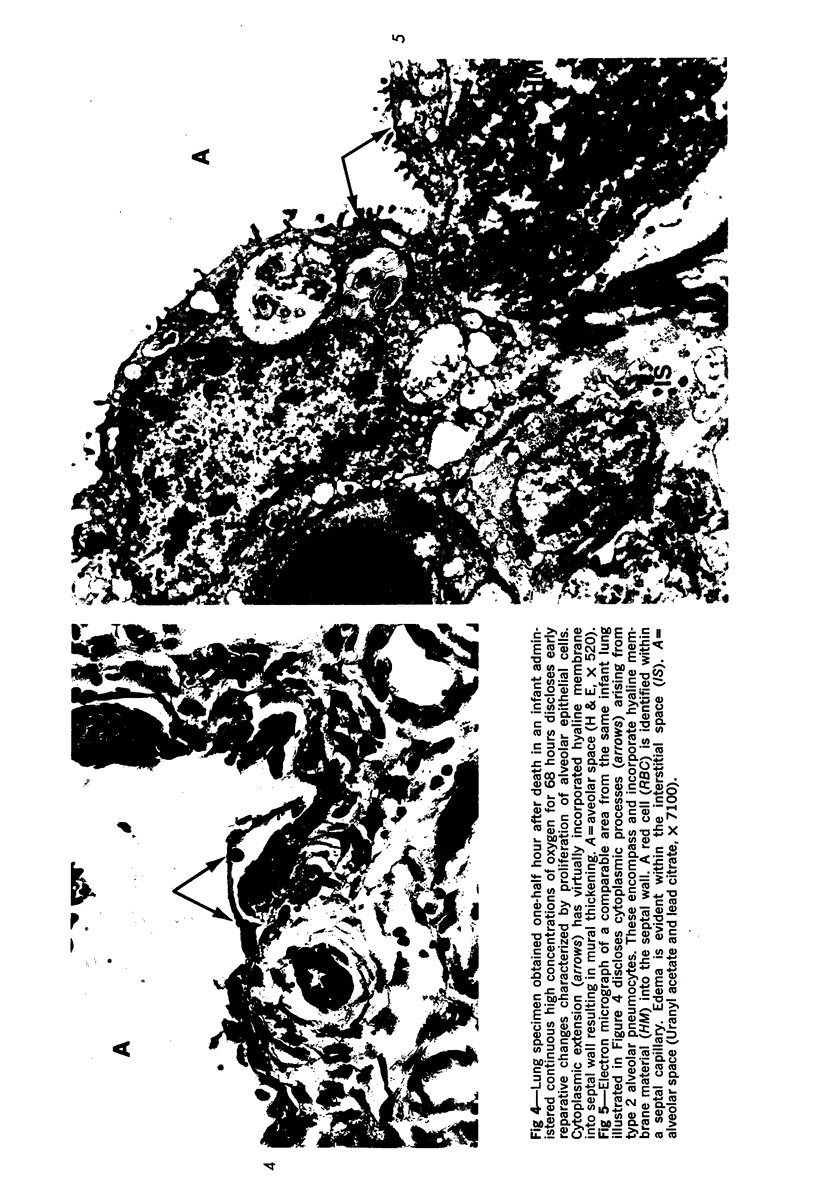
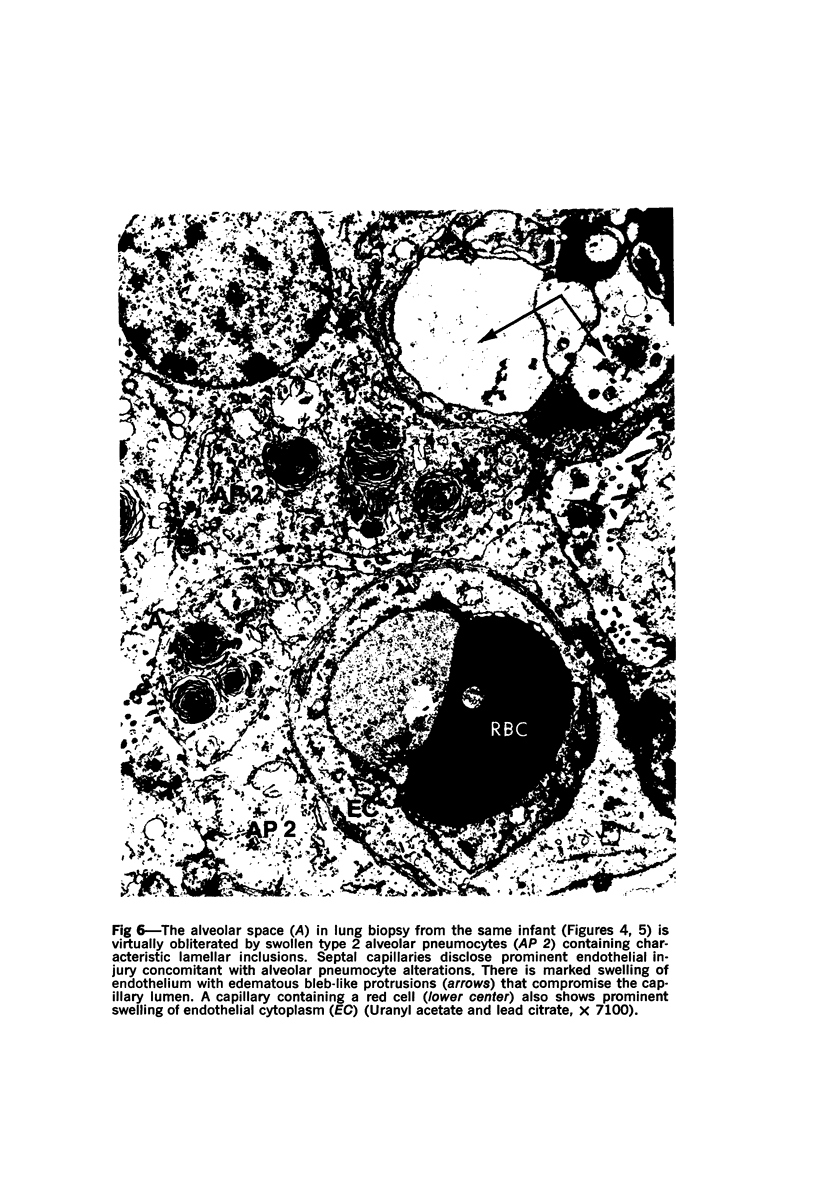
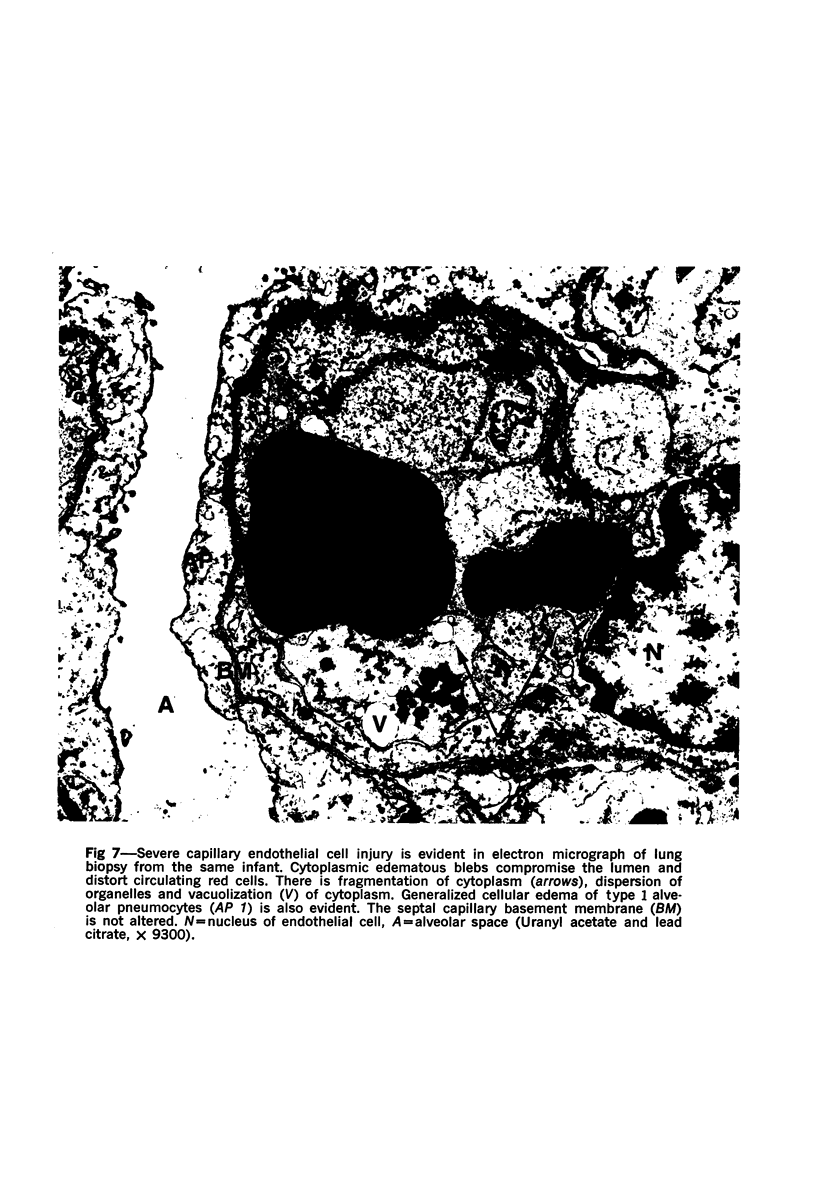
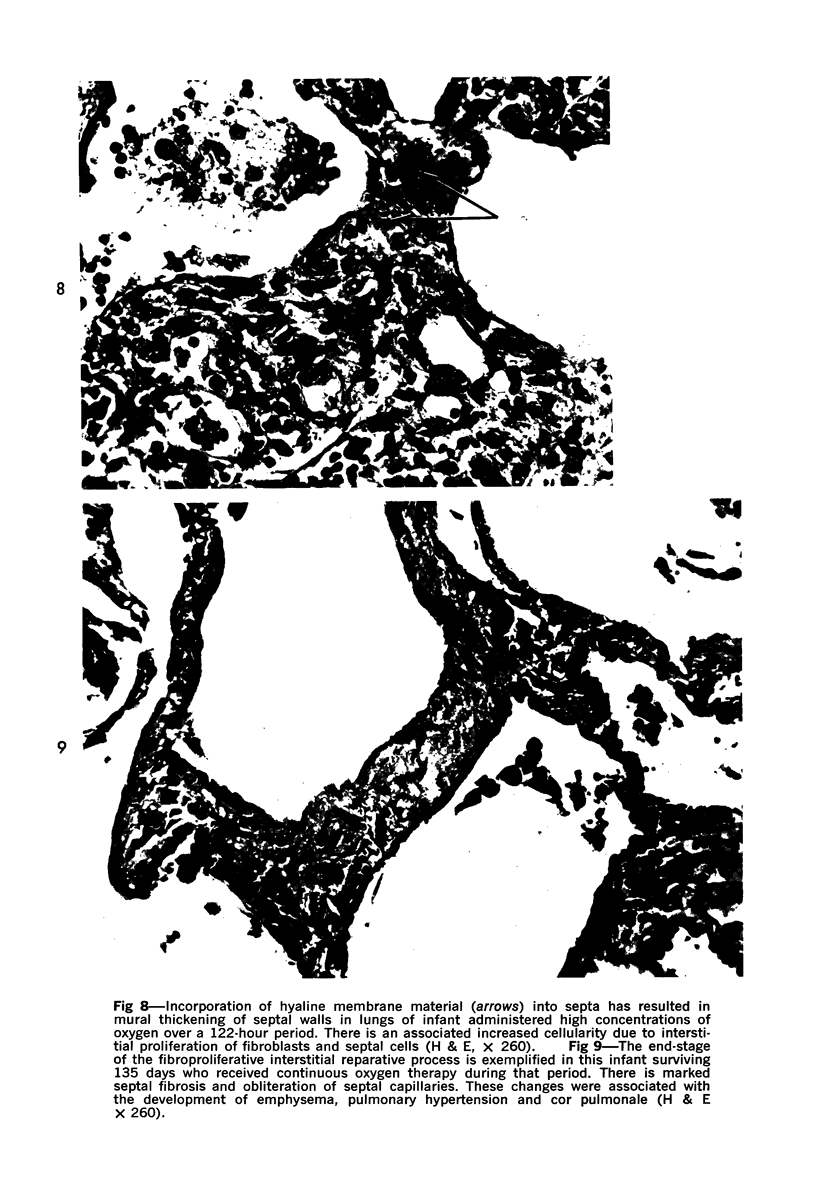
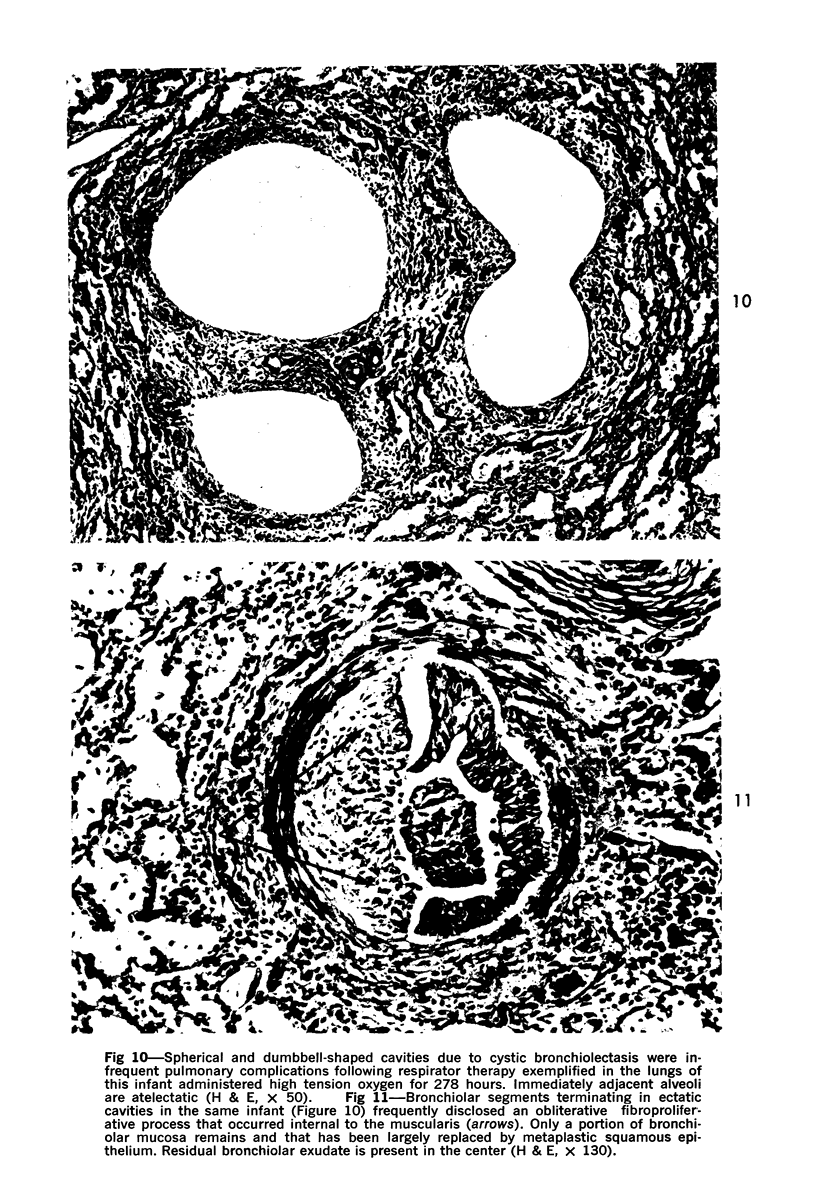
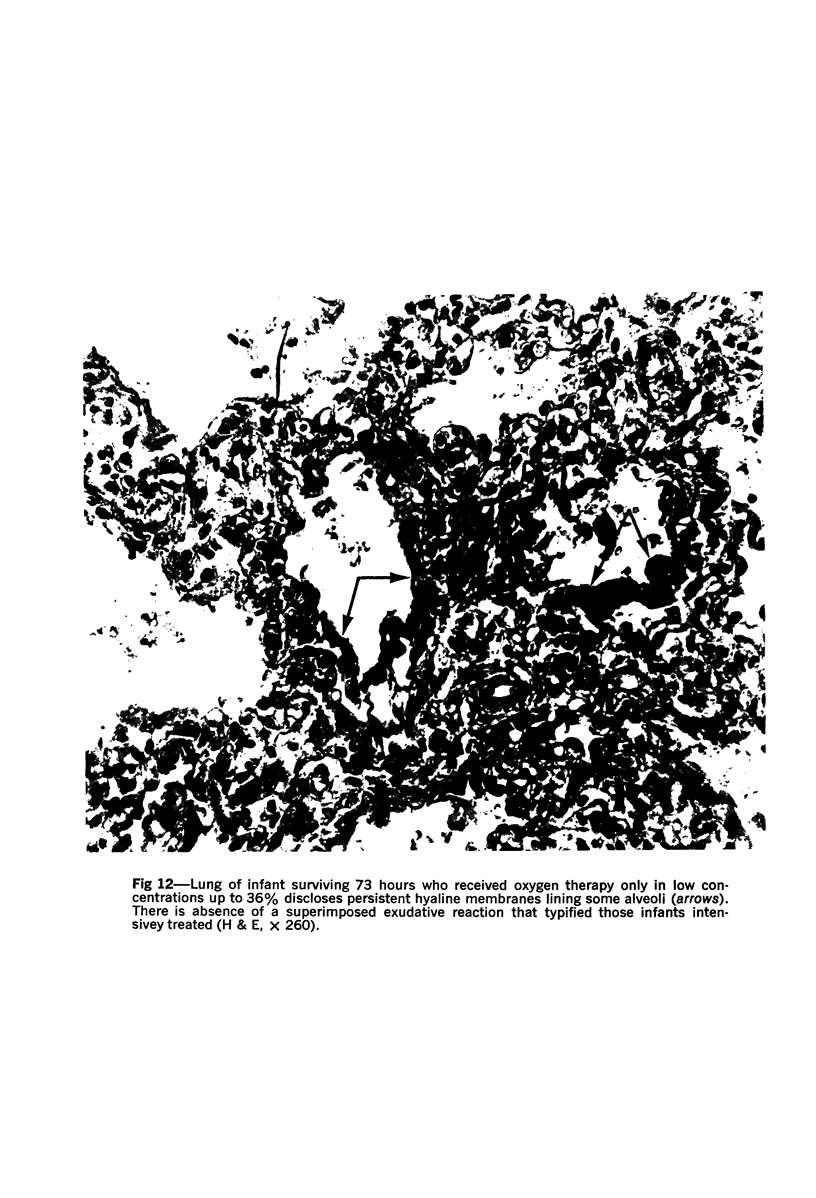
Images in this article
Selected References
These references are in PubMed. This may not be the complete list of references from this article.
- Anderson W. R., Strickland M. B. Pulmonary complications of oxygen therapy in the neonate. Postmortem study of bronchopulmonary dysplasia with emphasis on fibroproliferative obliterative bronchitis and bronchiolitis. Arch Pathol. 1971 Jun;91(6):506–514. [PubMed] [Google Scholar]
- BERFENSTAM R., EDLUND T., ZETTERGREN L. The hyaline membrane disease; a review of earlier clinical and experimental findings and some studies on the pathogenesis of hyaline membranes in O2-intoxicated rabbits. Acta Paediatr. 1958 Jan;47(1):82–100. doi: 10.1111/j.1651-2227.1958.tb07861.x. [DOI] [PubMed] [Google Scholar]
- BRUNS P. D., SHIELDS L. V. High oxygen and hyaline-like membranes. Am J Obstet Gynecol. 1954 Jun;67(6):1224–1236. doi: 10.1016/s0002-9378(16)38491-5. [DOI] [PubMed] [Google Scholar]
- Becker M. J., Koppe J. G. Pulmonary structural changes in neonatal hyaline membrane disease treated with high pressure artificial respiration. Thorax. 1969 Nov;24(6):689–694. doi: 10.1136/thx.24.6.689. [DOI] [PMC free article] [PubMed] [Google Scholar]
- Brooksby G. A., Dennis R. L., Datnow B., Clark D. Experimental emphysema. Histologic changes and alterations in pulmonary circulation. Calif Med. 1967 Nov;107(5):391–395. [PMC free article] [PubMed] [Google Scholar]
- CEDERGREN B., GYLLENSTEN L., WERSALL J. Pulmonary damage caused by oxygen poisoning: an electron-microscopic study in mice. Acta Paediatr. 1959 Sep;48:477–494. [PubMed] [Google Scholar]
- Coalson J. J., Beller J. J., Greenfield L. J. Effects of 100 per cent. oxygen ventilation on pulmonary ultrastructure and mechanics. J Pathol. 1971 Aug;104(4):267–273. doi: 10.1002/path.1711040409. [DOI] [PubMed] [Google Scholar]
- DeLemos R., Wolfsdorf J., Nachman R., Block A. J., Leiby G., Wilkinson H. A., Allen T., Haller J. A., Morgan W., Avery M. E. Lung injury from oxygen in lambs: the role of artificial ventilation. Anesthesiology. 1969 Jun;30(6):609–618. doi: 10.1097/00000542-196906000-00007. [DOI] [PubMed] [Google Scholar]
- Giammona S. T., Kerner D., Bondurant S. Effect of oxygen breathing at atmospheric pressure on pulmonary surfactant. J Appl Physiol. 1965 Sep;20(5):855–858. doi: 10.1152/jappl.1965.20.5.855. [DOI] [PubMed] [Google Scholar]
- Gould V. E., Tosco R., Wheelis R. F., Gould N. S., Kapanci Y. Oxygen pneumonitis in man. Ultrastructural observations on the development of alveolar lesions. Lab Invest. 1972 May;26(5):499–508. [PubMed] [Google Scholar]
- Hawker J. M., Reynolds E. O., Taghizadeh A. Pulmonary surface tension and pathological changes in infants dying after respirator treatment for severe hyaline membrane disease. Lancet. 1967 Jul 8;2(7506):75–77. doi: 10.1016/s0140-6736(67)92063-6. [DOI] [PubMed] [Google Scholar]
- Hudson L. H., Erdmann R. R. Pulmonary vascular changes in newborn mice following exposure to increased oxygen tensions under moderate hyperbaric conditions. Angiology. 1966 Nov;17(11):819–824. doi: 10.1177/000331976601701103. [DOI] [PubMed] [Google Scholar]
- Kapanci Y., Weibel E. R., Kaplan H. P., Robinson F. R. Pathogenesis and reversibility of the pulmonary lesions of oxygen toxicity in monkeys. II. Ultrastructural and morphometric studies. Lab Invest. 1969 Jan;20(1):101–118. [PubMed] [Google Scholar]
- Kaplan H. P., Robinson F. R., Kapanci Y., Weibel E. R. Pathogenesis and reversibility of the pulmonary lesions of oxygen toxicity in monkeys. I. Clinical and light microscopic studies. Lab Invest. 1969 Jan;20(1):94–100. [PubMed] [Google Scholar]
- Kistler G. S., Caldwell P. R., Weibel E. R. Development of fine structural damage to alveolar and capillary lining cells in oxygen-poisoned rat lungs. J Cell Biol. 1967 Mar;32(3):605–628. doi: 10.1083/jcb.32.3.605. [DOI] [PMC free article] [PubMed] [Google Scholar]
- Laurenzi G. A., Yin S., Guarneri J. J. Adverse effect of oxygen on tracheal mucus flow. N Engl J Med. 1968 Aug 15;279(7):333–339. doi: 10.1056/NEJM196808152790701. [DOI] [PubMed] [Google Scholar]
- Lauweryns J. M. "Hyaline membrane disease" in newborn infants. Macroscopic, radiographic, and light and electron microscopic studies. Hum Pathol. 1970 Jun;1(2):175–204. doi: 10.1016/s0046-8177(70)80033-8. [DOI] [PubMed] [Google Scholar]
- Lee C. J., Lyons J. H., Konisberg S., Morgan F., Moore F. D. Effects of spontaneous and positive-pressure breathing of ambient air and pure oxygen at one atmosphere pressure on pulmonary surface characteristics. J Thorac Cardiovasc Surg. 1967 Jun;53(6):759–769. [PubMed] [Google Scholar]
- Nash G., Blennerhassett J. B., Pontoppidan H. Pulmonary lesions associated with oxygen therapy and artifical ventilation. N Engl J Med. 1967 Feb 16;276(7):368–374. doi: 10.1056/NEJM196702162760702. [DOI] [PubMed] [Google Scholar]
- Northway W. H., Jr, Rosan R. C., Porter D. Y. Pulmonary disease following respirator therapy of hyaline-membrane disease. Bronchopulmonary dysplasia. N Engl J Med. 1967 Feb 16;276(7):357–368. doi: 10.1056/NEJM196702162760701. [DOI] [PubMed] [Google Scholar]
- Northway W. H., Jr, Rosan R. C., Shahinian L., Jr, Castellino R. A., Gyepes M. T., Durbridge T. Radiologic and histologic investigation of pulmonary oxygen toxicity in newborn guinea pigs. Invest Radiol. 1969 May-Jun;4(3):148–155. doi: 10.1097/00004424-196905000-00002. [DOI] [PubMed] [Google Scholar]
- PRATT P. C. Pulmonary capillary proliferation induced by oxygen inhalation. Am J Pathol. 1958 Nov-Dec;34(6):1033–1049. [PMC free article] [PubMed] [Google Scholar]
- Pariente R., Brouet G. Modifications ultrastructurales pulmonaires induites par l'oxygène. Conséquences physio-pathologiques. Rev Eur Etud Clin Biol. 1971 Apr;16(4):379–385. [PubMed] [Google Scholar]
- Regele H. Veränderungen der menschlichen Lungen unter maschineller Beatmung. Beitr Pathol Anat. 1967;136(2):165–179. [PubMed] [Google Scholar]
- Robinson F. R., Sopher R. L., Witchett C. E., Carter V. L., Jr Pathology of normobaric oxygen toxicity in primates. Aerosp Med. 1969 Aug;40(8):879–884. [PubMed] [Google Scholar]
- Rosenbaum R. M., Wittner M., Lenger M. Mitochondrial and other ultrastructural changes in great alveolar cells of oxygen-adapted and poisoned rats. Lab Invest. 1969 Jun;20(6):516–528. [PubMed] [Google Scholar]
- Rowland R., Newman C. G. Pulmonary complications of oxygen therapy. J Clin Pathol. 1969 Mar;22(2):192–198. doi: 10.1136/jcp.22.2.192. [DOI] [PMC free article] [PubMed] [Google Scholar]
- Schaffner F., Felig P., Trachtenberg E. Structure of rat lung after protracted oxygen breathing. Arch Pathol. 1967 Jan;83(1):99–107. [PubMed] [Google Scholar]
- Smith J. L. The pathological effects due to increase of oxygen tension in the air breathed. J Physiol. 1899 Mar 22;24(1):19–35. doi: 10.1113/jphysiol.1899.sp000746. [DOI] [PMC free article] [PubMed] [Google Scholar]
- Soloway H. B., Castillo Y., Martin A. M., Jr Adult hyaline membrane disese: relationship to oxygen therapy. Ann Surg. 1968 Dec;168(6):937–945. doi: 10.1097/00000658-196812000-00001. [DOI] [PMC free article] [PubMed] [Google Scholar]
- Spencer H. Interstitial pneumonia. Annu Rev Med. 1967;18:423–442. doi: 10.1146/annurev.me.18.020167.002231. [DOI] [PubMed] [Google Scholar]
- Tsai S. H., Anderson W. R., Strickland M. B., Pliego M. Bronchopulmonary dysplasia associated with oxygen therapy in infants with respiratory distress syndrome. Radiology. 1972 Oct;105(1):107–112. doi: 10.1148/105.1.107. [DOI] [PubMed] [Google Scholar]
- Yamamoto E., Wittner M., Rosenbaum R. M. Resistance and susceptibility to oxygen toxicity by cell types of the gas-blood barrier of the rat lung. Am J Pathol. 1970 Jun;59(3):409–436. [PMC free article] [PubMed] [Google Scholar]












